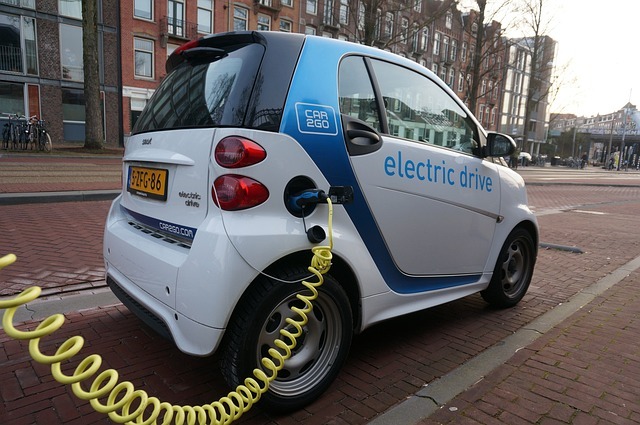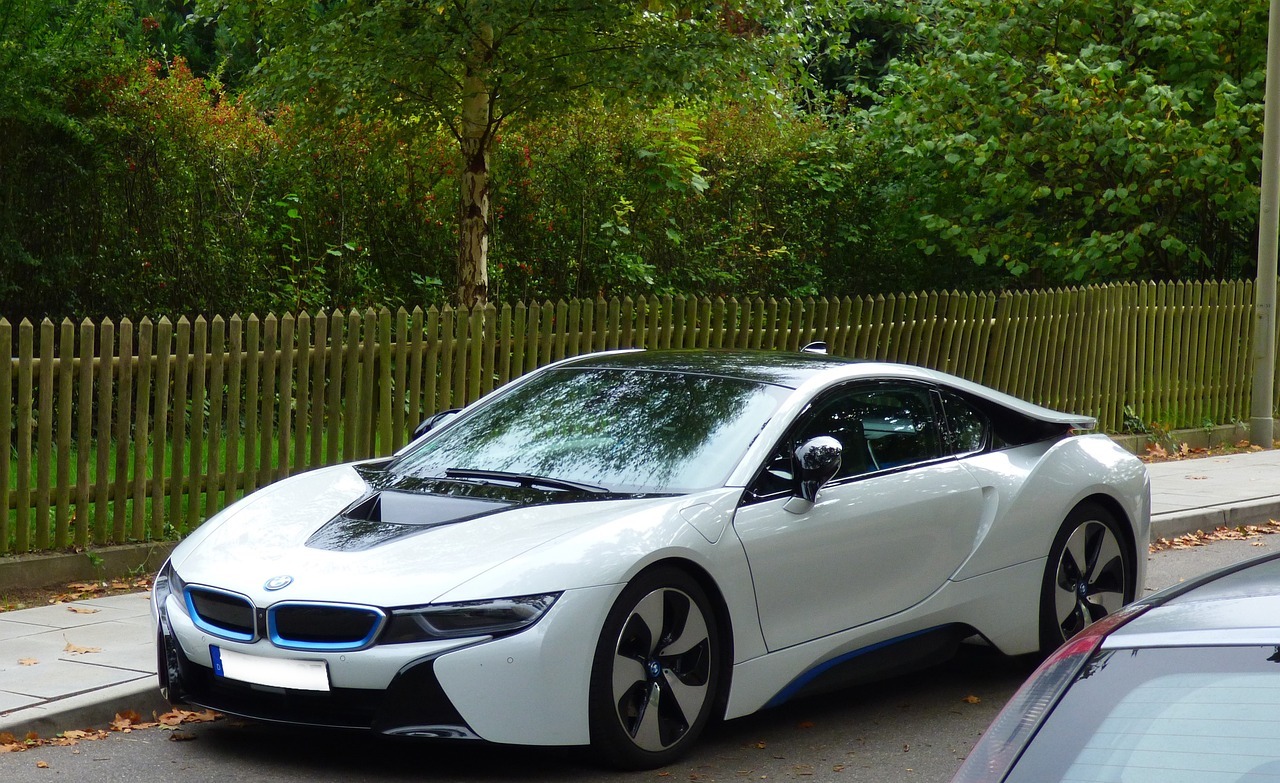An electric vehicle features one or more electric motors or traction motor propulsion. You can operate it through a system that gets electricity from other sources, such as batteries, fuel cells, solar panels, or an electric generator for converting fuel into electricity. Electric vehicles are not limited to road and rail only but also underwater and air.
These electric vehicles were first launched in the mid of the 19th century when electricity was among the most preferred methods for motor vehicle propulsion. It provided comfort and ease of operation that wouldn’t be possible to achieve without gasoline cars at that time.
Modern internal combustion engines have dominated the propulsion methods in motor vehicles for almost a century now. However, electric power was standard in other kinds of vehicles, like trains and other small cars.
In recent years, electric vehicles have seen a comeback due to technological developments, a high focus on sustainable energy, and the desire to reduce transport’s environmental impact. According to Project Drawdown, electric vehicles are one of the best new solutions for addressing climate change.
Essential Components of Electric Vehicle
Traction Battery Pack
The battery’s function in an electric car is like the electrical energy storage system in the shape of direct-current or DC. Once it gets a signal from the controller, the battery allows DC electrical energy to flow towards the inverter so that it can be used to drive the motor.
This type of battery is rechargeable and is used in almost all-electric vehicles, known as the traction battery pack. The most commonly used batteries in electric vehicles are called lithium-ion batteries.
Power Inverter
The power inverter’s function is to change the Direct Current (DC) to Alternate Current (AC). Once it’s converted, the electric motor uses this alternating current.
The inverter present in the electric car can also change the AC during regenerative braking to DC, which is then used to recharge the car batteries. The standard type of inverter used in most electric cars falls under the bi-directional inverter category.
Controller
The controller’s primary function is to regulate the electrical energy from batteries to inverters distributed to electric motors. While the controller gets the direct input from the car’s pedal, this pedal setting will help determine the variation of frequency or voltage that will enter the motor while deciding the car’s speed at the same time.
In short, the controller manages the flow of energy that the traction batteries deliver while controlling the electric traction motor’s speed and the torque it produces. This component helps in determining how the electric car works.
Battery Charger
A battery charger is used to recharge the battery when needed, which gets energy from external sources like utility grids or solar power plants. The AC electricity is converted into DC electricity, and then it is stored in the battery. There are two types of chargers:
- Onboard Charger
The onboard charger is located and installed in the car. It takes the incoming AC electricity supplied by the charging port and converts it into DC to charge the traction battery. It interacts with the charging equipment and monitors the battery’s characteristics like current, voltage, temperature, and charge status while charging the pack.
- Off-board Charger
The off-board charger is not located or installed in a car but exists externally.
Transmission
The transmission function is to transfer the mechanical power from an electric traction motor to drive wheels.
DC/DC Converter
DC Converter converts high-voltage DC power from a traction battery pack to the lower-voltage DC power required to run the vehicle’s accessories and recharge the auxiliary battery.
Battery
In an electric car, a battery is needed for providing electricity to power the vehicle and other components inside it.
Thermal System For Cooling
This system helps maintain the proper temperature of the electric motor, engine, power electronics, and other components.
Charging Port
The charging port allows you to connect the vehicle to an external power supply to charge the traction battery pack, hence charging the car.
Types of Electric Cars
1. Battery Electricity Vehicle (BEV)
A Battery Electric Vehicle (BEV), also known as All-Electric Vehicle (AEV), entirely runs on a battery and an electric drive train. Such types of electric vehicles don’t have an ICE (Internal Combustion Engine). Electricity gets stored in a large battery pack that is charged by plugging into an electricity grid. As a result, the battery pack provides power to electric motors to run the electric car.
Main Components of BEVs
- Electric motor
- Inverter
- Battery
- Controlling Module
- Drive train
Working Principles of BEVs
- The power is converted from the DC battery to AC for the electric motor.
- The accelerator pedal sends a signal to the controller, which adjusts the vehicle’s speed by changing the AC motor’s frequency from the inverter to the engine.
- The motor connects and turns the wheel through the cog.
- Once you press the brake, the electric car decelerates, and the motor becomes an alternator and produces power. This power is then sent back to the battery to charge it.
Popular Examples of BEVs
Examples of this type of car include Volkswagen e-Golf, Tesla Model 3, BMW i3, Chevy Bolt, Chevy Spark, Nissan LEAF, Ford Focus electric, Karma Revero, Hyundai Ioniq, Kia Soul and Tesla X, etc.
2. Hybrid Electric Vehicle (HEV)
Hybrid Electric Vehicle is commonly known as a standard hybrid or parallel hybrid. This vehicle includes both an electric motor and an ICE. In these vehicles, the internal combustion engine gets energy from fuel such as gasoline and other alternatives, while the motor receives power from batteries. The engine and the electric motor at the same time rotate the transmission that drives the wheel.
The difference between HEV and other types of vehicles is that batteries can only be charged with the help of ICE, movement of the wheels, or a combination of both. There is no charging port, so you cannot recharge the batteries from external sources like the electricity grid.
Components of HEV
- Engine
- Electric Motor
- Battery Pack with controller and inverter
- Fuel tank
- Control module
Working Principle of HEV
- It has a fuel tank that supplies gas to the engine like a conventional car.
- It also includes a set of batteries that run on an electric motor.
- Both the electric motor and engine of the car can turn the transmission simultaneously.
Popular Examples of HEVs
Examples of HEV include Honda Civic Hybrid, Toyota Prius Hybrid, and Toyota Camry Hybrid.
3. Plug-in Hybrid Electric Vehicles (PHEV)
A plug-in hybrid or PHEV is a type of car that has both an ICE and a motor. These PHEVs are also commonly known as a series hybrid. These electric vehicles give you a choice between using different kinds of fuels.
Such vehicles can work on conventional fuel like gasoline or an alternative fuel like bio-diesel and a rechargeable battery pack to operate. You can charge the battery with electricity by plugging it into a switch or an electric charging station (EVCS).
Components of PHEV
- Electric Motor
- Engine
- Inverter
- Battery
- Fuel tank
- Control module
- Battery charger (for onboard model)
Working Principle of PHEVs
Usually, PHEVs start-up in an all-electric mode and operate on electricity until their battery pack is used. Some models turn to hybrid mode when they reach the highway cruising speed above 70 miles.
As the battery drains, the engine kicks in, and the vehicle runs as a standard vehicle. In addition to plugging the batteries into an external power source, you can charge them with the help of an internal combustion engine or regenerative braking system.
When you press the brakes, the electric motor acts as a generator, using the energy to charge the battery. The electric motor enhances the engine’s power, allowing the smaller engines to be used; thus, increasing the vehicle’s fuel efficiency without accommodating performance.
Popular Examples of PHEVs
Examples of PHEV include Porsche Cayenne S E-Hybrid, Chrysler Pacifica Hybrid, Ford C-Max Energi, Chevy Volt, Ford Fusion Energi, Mercedes C350e, Mercedes S500, Audi A3 E-Tron, BMW i8, Hyundai Sonata, Kia Optima, Volvo XC90 T8, etc.
4. Fuel Cell Powered Electric Vehicle (FCEV)
Fuel Cell Electric Vehicles (FCEVs) are also known as fuel cell vehicles (FCVs) or zero-emission vehicles. These vehicles use fuel cell technology to generate the electricity needed to operate the car. The fuel’s chemical energy is directly converted into electric power as the primary energy source in these cars.
Main Components of FCEVs
- Electric Motor
- Fuel-cell stack
- Hydrogen storage tank
- Battery with converter and controller
Working Principle of FCEVs
The FCEV’s working principle is different from a ‘plug-in’ electric car, and that is because the FCEV generates electricity that is needed to run on the vehicle itself and is produced by fuel cells.
Examples of FCEVs
Examples of FCEV include Toyota Mirai, Hyundai Tucson FCEV, Honda Clarity Fuel Cell, and Hyundai Nexo.
Electric Vehicles – Futuristic and Environmental Friendly
Electric cars are great as they run on electricity and make your journey a lot cheaper than conventional vehicles. Although they might seem very costly, they will save you tons of money on fuel in the long run. Most car manufacturers are now moving towards the electric aspect. Hence, we will surely see more electric cars in the future, and therefore they are expected to be a significant part of the future world of cars.

